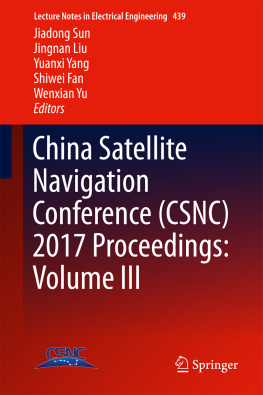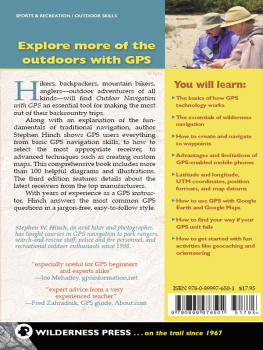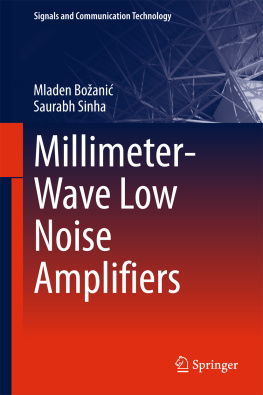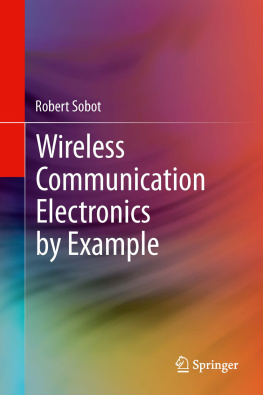Acknowledgments
The authors would like to thank the Technological Campus of the University of Navarra (TECNUN), Centro de Estudios e Investigaciones Tcnicas (CEIT), and everybody at the COMMIC group (www.ceit.es/electrocom/RF/) for making possible this book's research. They also wish to express their gratitude to the Spanish government's Centro Para el Desarrollo Tecnolgico Industrial (CDTI) office, the Basque government's Departamento de Industria, and the companies INCIDE S.A. and Owasys S.L.L. for their financial support. They would also like to thank Haymar Mancisidor for his invaluable help with the artwork and Marc Oakley for his editing work and valuable comments about the language of this book. The authors are very grateful to the McGraw-Hill team, not only for the chance to have this book published but for contributing to its development.
Finally, the authors thank their families for their support and patience. Without it this book would not have been possible.
Chapter 1
Introduction
Of the various applications that satellites have been used for, one of the most promising is that of global positioning. Made possible by Global Navigation Satellite Systems, global positioning enables any user to know his or her exact position on Earth. Nowadays, the only fully functioning system is the American Global Positioning System (GPS). However, the European system, known as Galileo, is expected to be operative in 2012.
Since ancient times, mankind has tried to find its bearings by using milestones and stars. A new era has begun, however, thanks to satellite communication. New devices will be necessary to take advantage of both GPS and Galileo systems.
1.1 Satellite Navigation
Navigation is defined as the process of planning, reading, and controlling the movement of a craft or vehicle from one place to another. The word navigate is derived from the Latin root navis, meaning "ship," and agere meaning "to move" or "to direct." All navigational techniques involve locating the navigator's position by comparing it to known locations or patterns.
Since ancient times, human beings have been developing ingenious ways to navigate. Polynesians and modern navies developed the use of angular measurements of the stars. Everyone engages in some form of navigation in everyday life. When we use our eyes, common sense, and landmarks to find our way when driving to work or walking to a store, we are essentially navigating. Nevertheless, with the development of radios, the need for another class of navigation aids came along. This new phase in navigation called for more accurate information of position, intended course, and/or transit time to a desired destination. Examples of these navigational aids include a simple clock to determine velocity over a known distance, an odometer to keep track of the distance travelled, and more complex navigation aids that transmit electronic signals such as radio beacons, VHF omnidirectional radio ranges (VORs), long-range radio navigation (LORAN), and OMEGA. With artificial satellites, more precise line-of-sight radio-navigation signals became possible.
The position of anyone with a proper radio-navigation receiver can be computed by means of the signals from one or more radio-navigation aids. In addition to computing the user's position, some radio-navigation aids provide velocity determination and time dissemination. The user's receiver processes these signals, computes its position, and performs the required computational calculations (e.g., range, bearing, estimated time of arrival) so that the user can reach a desired location.
Radio-navigation aids can be classified as either ground-based or space-based. For the most part, the accuracy of ground-based radio-navigation aids is proportional to their operating frequency. Highly accurate systems generally transmit at relatively short wavelengths and the user must remain within the line of sight, whereas systems broadcasting at lower frequencies (longer wavelengths) are not limited to line of sight but are less accurate[Kaplan96], [Parkinson96].
1.1.1 GPS Predecessors
In the early 1960s, several U.S. governmental organizationsincluding the Department of Defense (DOD), the National Aeronautics and Space Administration (NASA), and the Department of Transportation (DOT)were interested in developing satellite systems for position determination. The optimum system was viewed as having the following attributes: global coverage, continuous/all weather operation, the ability to serve high-dynamic platforms, and high accuracy.
The system Transit became operational in 1964 and its operation was based on the measurement of the Doppler shift of a tone at 400MHz sent by polar orbiting satellites at altitudes of about 600 nautical miles (ionospheric group delay was corrected by transmitting two frequencies). Transit satellites travelled along well-known paths and broadcasted their signals on a well-known frequency.
The received frequency will differ slightly from the broadcast frequency because of the movement of the satellite with respect to the receiver. If the frequency shift is measured over a short time interval, the receiver can determine its location on one side or the other of the satellite. Many measurements such as these, combined with precise knowledge of the satellite's orbit, can enable a receiver to compute a particular position. This first system had its limitations, as it offered an intermittent service with limited coverage with periods of 35min. to 100min. of unavailability. However, because of its low velocity, its two-dimensional nature was suitable for shipboard navigation rather than for high dynamic uses, as aircrafts. The technology developed for Transit, which included both satellite prediction algorithms and more than 15 years of space system reliability, exceeding expectations more than two or three times, has proved to be extremely useful for GPS. Limitations of early developed spaced-based systems (the U.S. Transit and the Russian Tsikada system) led to the development of both the U.S. Global Positioning System (GPS) and the Russian Global Navigation Satellite System (GLONASS).
Overcoming these early systems' shortcomings required either an enhancement of Transit or the development of another satellite navigation system with the desired capabilities previously mentioned. By 1972, breakthroughs were made by installing high-precision clocks in satellites. These satellites, known as Timation, were used principally to provide highly precise time and time transfer between various points on Earth. They additionally provided navigational information. Several variants of the original Transit system were proposed, among them the inclusion of highly stable space-based atomic clocks in order to achieve precise time transfer. Modifications were made to Timation satellites to provide a ranging capability for two-dimensional position determination, employing side-tone modulation for satellite-to-user ranging.
Later models of the Timation satellites employed the first atomic frequency standards (rubidium and cesium), which typically had a frequency stability of several parts per 1012 (per day) or better. This frequency stability greatly improves the prediction of satellite orbits (ephemerides) and also lengthens the required update time between control segment and satellites. This revolutionary work in space-qualified time standards was also important for the development of GPS.
At the same time as the Navy was considering the Transit enhancements and undertaking the Timation efforts, the Air Force conceptualized a satellite positioning system denoted as System 621B. By 1972, this programme had already demonstrated the operation of a new type of satellite-ranging signal based on pseudorandom noise (PRN). The signal modulation was essentially a repeated signal sequence of fairly random bits (ones or zeros) that possessed certain useful properties. The start ("phase") of the repeated sequence could be detected and used to determine the range of a satellite. The signals could be detected even when their power density was less than 1/100th that of ambient noise and all satellites could broadcast on the same nominal frequency because properly selected PRN codes were nearly orthogonal. The ability to reject noise also implied a powerful ability to resist most forms of jamming or deliberate interference.










